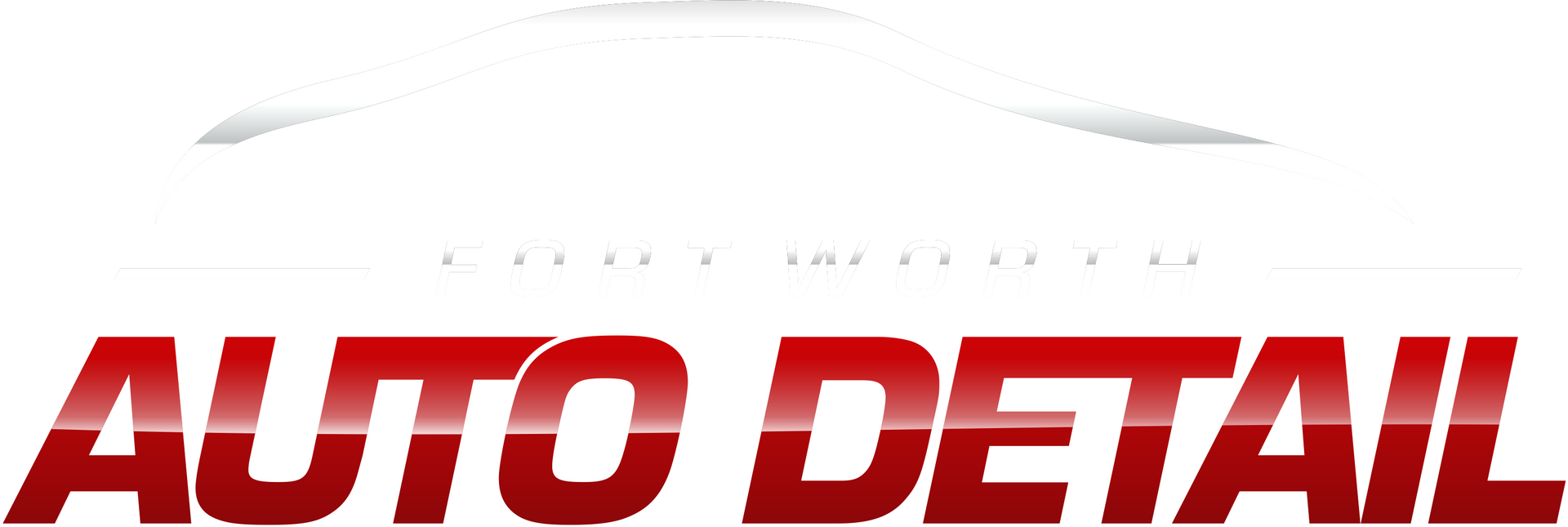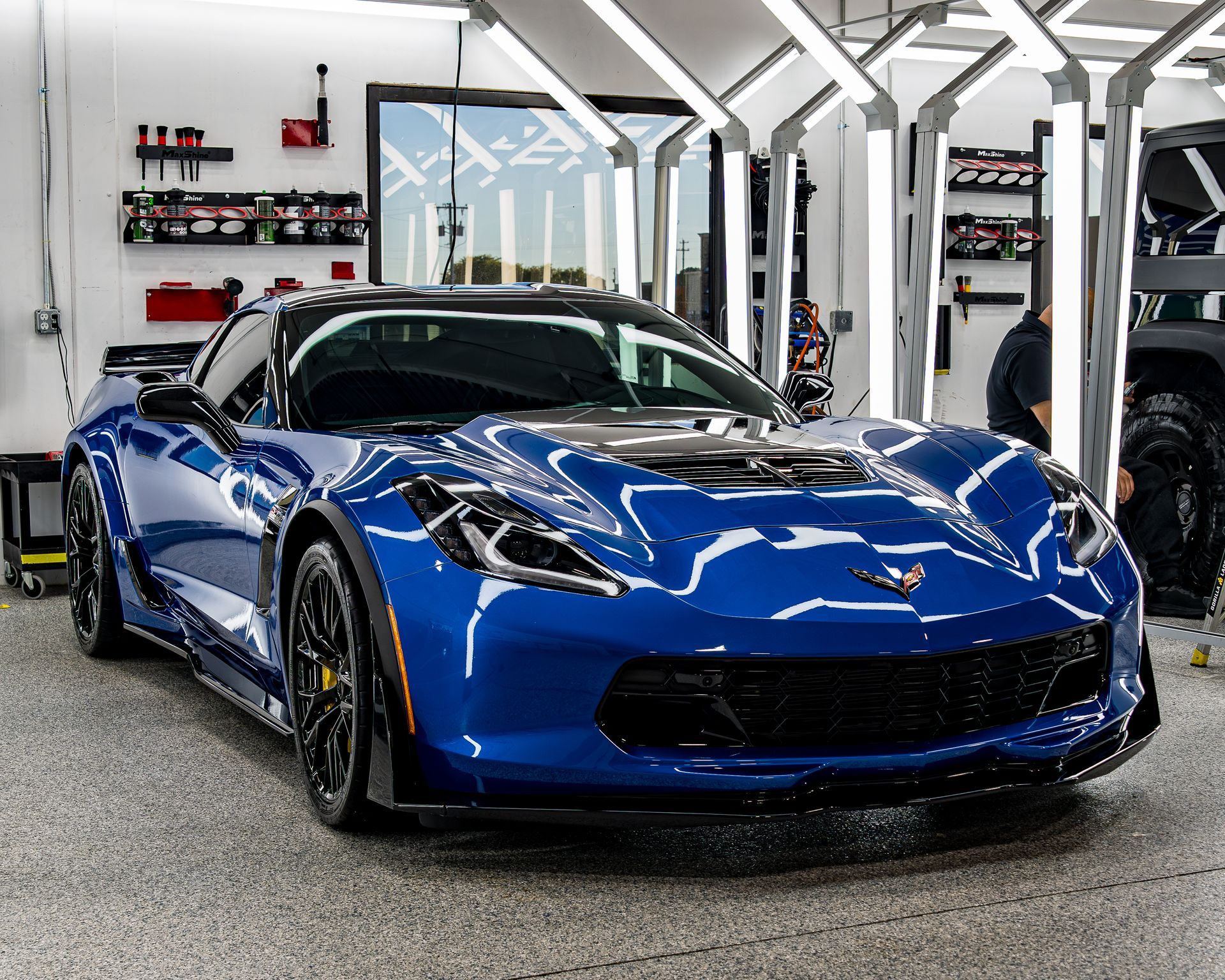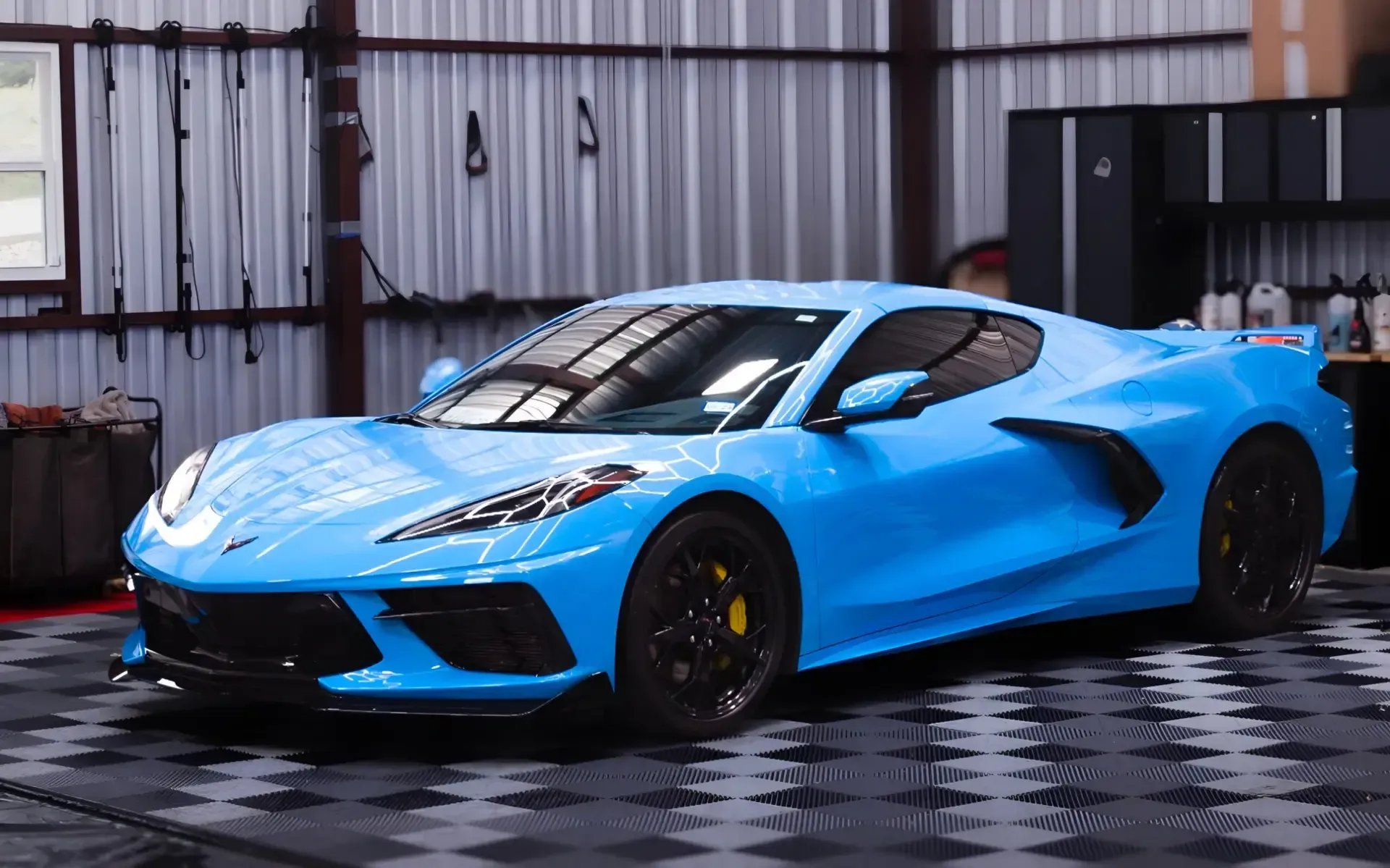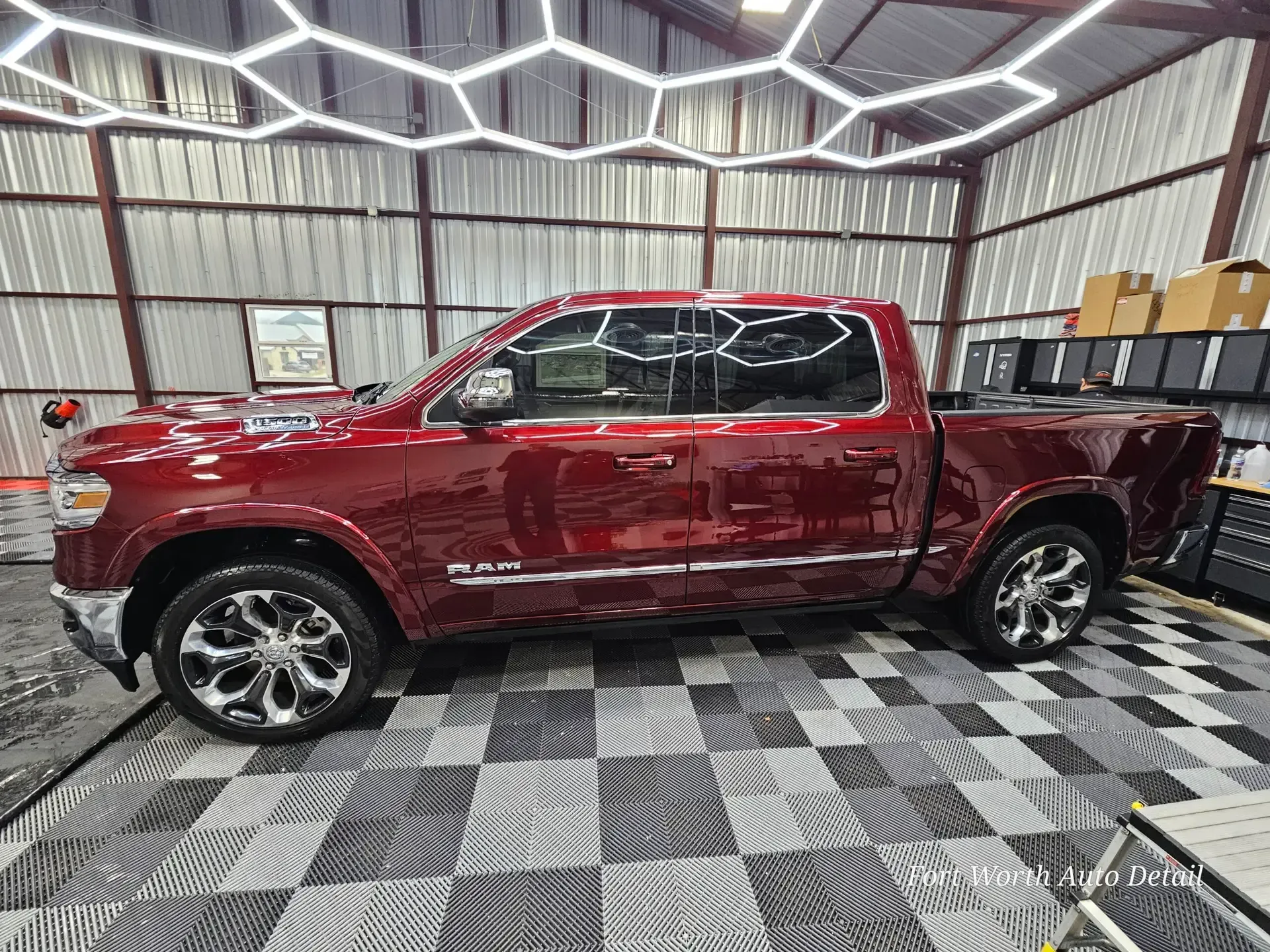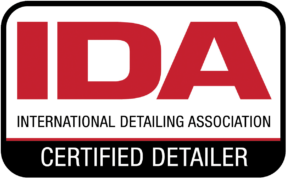Ceramic Coating and PPF: Can They Work Together?

When it comes to protecting your vehicle’s paint, you’ve likely heard about the benefits of ceramic coatings and the advantages of paint protection film (PPF).
But what happens when you consider combining these two powerful forms of protection? The question arises: can ceramic coatings and PPF work together harmoniously to provide your vehicle with enhanced safeguarding?
Let’s explore the intriguing possibilities and potential drawbacks of this combined approach to shielding your vehicle’s exterior.
Key Takeaways
- PPF and ceramic coating in Fort Worth can complement each other for enhanced protection.
- Proper compatibility testing and meticulous application are crucial for successful bonding.
- PPF offers long-lasting physical protection, while ceramics enhance durability and gloss.
- Maintenance is key to maximizing the lifespan and effectiveness of both coatings.
Benefits of Ceramic Coatings
Enhancing the durability and gloss of your vehicle’s paint, ceramic coatings provide long-lasting protection against environmental contaminants. Ceramic durability is a key benefit of these coatings, offering a hard shell that can withstand various external factors, such as UV rays, acid rain, and bird droppings. This durability thus guarantees that your car’s paint remains intact and protected over an extended period.
Additionally, ceramic coatings provide a higher level of damage resistance compared to traditional waxes or sealants. The strong chemical bond formed between the ceramic coating and the paint surface helps to prevent swirl marks, keeping your vehicle looking pristine for longer periods. This aspect is particularly important for car enthusiasts who seek to maintain their vehicle’s appearance at a high standard.
Furthermore, ceramic coatings offer hydrophobic properties, meaning they repel water and contaminants effectively. This characteristic not only makes your car easier to clean but also reduces the chances of water spots forming on the surface. By keeping your vehicle cleaner for longer, ceramic coatings reduce the frequency of washes needed, saving you time and effort while maintaining a sleek appearance.
Considering the benefits of ceramic coatings about durability, damage resistance, and hydrophobic properties, it’s evident why many car owners opt for this advanced protection method to safeguard their vehicle’s paint for an extended period.
Advantages of PPF
With its ability to provide an additional layer of protection, paint protection film (PPF) offers numerous advantages for preserving your vehicle’s exterior. PPF excels in safeguarding your car’s paintwork from various forms of damage, making it an essential investment for maintaining the aesthetic appeal and value of your vehicle.
One of the primary benefits of PPF is its exceptional paint protection capabilities. The film acts as a shield against stone chips, swirl marks, bug splatter, bird droppings, and other environmental contaminants that can harm the surface of your car. By absorbing the impact and preventing these elements from reaching the paint, PPF guarantees that your vehicle retains its flawless finish for an extended period.
Moreover, PPF provides unmatched surface protection by forming a durable barrier that’s resistant to UV rays, oxidation, and chemical stains. This guarantees that your car’s exterior remains pristine and free from discoloration or degradation caused by prolonged sun exposure or harsh chemicals.
Furthermore, the self-healing properties of some PPF products enable minor swirl marks to disappear with exposure to heat, maintaining the film’s clarity and protecting the underlying paint.
Compatibility of Ceramic and PPF
Moving from the advantages of PPF to the compatibility of ceramic coatings and PPF, understanding how these two protective measures interact can be important for maximizing the protection of your vehicle’s exterior. Compatibility testing is vital when considering applying ceramic coatings on top of PPF. These coatings are designed to bond with the paint, but they can also adhere well to PPF if the surface prep is done correctly.
Surface prep is a critical step in guaranteeing the compatibility of ceramic and PPF. Before applying a ceramic coating over PPF, the surface needs to be thoroughly cleaned and decontaminated to remove any residues that could inhibit the bond between the two layers. This process often involves using specialized cleaners and clays to ensure the PPF is free from any substances that might interfere with the ceramic coating’s ability to adhere properly.
Compatibility testing can be performed once the surface is properly prepped to confirm that the ceramic coating will bond effectively with the PPF. This testing involves applying a small amount of the ceramic coating to a discreet area of the PPF and checking for proper adhesion after curing. If the test is successful, the rest of the vehicle can be coated confidently, knowing that the ceramic and PPF are compatible and will work together to provide enhanced protection for your vehicle.
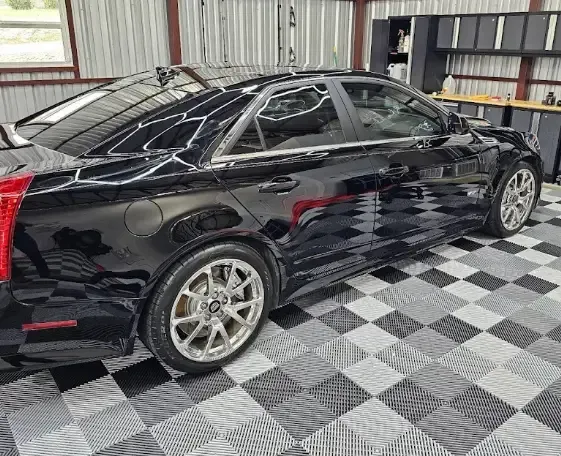
Application Process for Both
To confirm the proper application of ceramic coatings and PPF, meticulous attention to surface preparation is paramount. When applying ceramic coatings, ensure the surface is clean, decontaminated, and free of any imperfections. Begin by washing the vehicle thoroughly to remove dirt and grime. Next, use a clay bar to eliminate embedded contaminants that could interfere with the bonding process. After the surface is smooth, polish it to enhance clarity and remove any swirl marks. Finally, wipe down the surface with isopropyl alcohol to eliminate any remaining residues that could hinder adhesion.
For PPF application, surface preparation is equally essential. Start by cleaning the area to be protected to remove any dirt or oils. Precise cutting of the PPF is essential to ensure a perfect fit. Apply the PPF carefully, making sure to avoid trapping any air bubbles underneath. Once the PPF is in place, use a heat gun to activate the adhesive and ensure a secure bond to the surface.
Both ceramic coatings and PPF require specific application techniques to achieve the best results. Allow the ceramic coating to cure for the recommended time before exposing it to water or other elements. Similarly, follow the manufacturer’s guidelines for the drying time of PPF to ensure it sets properly. By meticulously following the application processes for both ceramic coatings and PPF, you can effectively protect and enhance your vehicle’s appearance.
Longevity and Durability Comparison
When comparing the longevity and durability of ceramic coatings and PPF, you need to take into account several key factors:
- Lifespan data
- Resilience under stress
- Wear and tear characteristics
These points will provide a thorough understanding of how each option performs over time and in various conditions. Analyzing these factors can help you make an informed decision on which protection method suits your needs best.
Lifespan Comparison Data
Comparing the longevity and durability of ceramics and PPF reveals essential insights into their compatibility.
Ceramic coatings typically last two to five years, depending on the quality of installation techniques used. On the other hand, PPF can remain effective for up to a decade when properly maintained.
While ceramic coatings offer cost-effectiveness in the short term due to their lower initial cost, PPF proves to be more cost-effective in the long run due to its extended lifespan. Additionally, ceramics have a minimal environmental impact compared to PPF, which may require replacement more frequently.
When considering maintenance requirements, ceramics demand periodic reapplications, whereas PPF necessitates occasional cleaning to maintain its protective properties.
Understanding these lifespan differences is important in choosing the most suitable option for your needs.
Resilience Under Stress
Withstanding various stressors, ceramic coatings and PPF exhibit different levels of resilience and durability over time. When subjected to resilience testing, ceramic coatings typically demonstrate higher stress endurance compared to PPF.
Here are some key points to keep in mind:
- Ceramic coatings excel in withstanding high temperatures, making them ideal for areas prone to heat exposure.
- PPF offers superior impact resistance, making it a preferred choice in areas susceptible to physical damage.
- Both coatings have undergone extensive stress endurance evaluations, proving their capability to endure harsh environmental conditions.
Understanding the specific stressors your vehicle encounters can help determine whether ceramic coatings or PPF is the better choice for enhancing resilience and durability.
Wear and Tear
To evaluate the longevity and durability of ceramic coatings and PPF in real-world conditions, an examination of their wear and tear performance is imperative. When comparing the protection level offered by ceramic coatings and PPF, it’s essential to take into account how they hold up against environmental factors.
Ceramic coatings are known for their exceptional resistance to swirl marks and chemical contaminants, providing a durable shield for your vehicle’s paint. On the other hand, PPF excels in impact protection, safeguarding against stone chips and other physical damage.
Understanding the wear and tear characteristics of these two products can help you make an informed decision based on your specific needs and the conditions your vehicle faces daily.
Maintenance Tips for Combined Protection
When caring for surfaces protected by both ceramic coatings and PPF, it’s important to use the correct cleaning techniques to maintain their integrity.
Understanding the longevity of PPF and its compatibility with various cleaning products will help you effectively preserve the protective layers.
Cleaning Ceramic-Coated Surfaces
To maintain the combined protection of ceramic-coated surfaces, guaranteeing proper cleaning is essential. When cleaning ceramic-coated surfaces in conjunction with PPF, follow these maintenance tips:
- Use pH-neutral cleaners: Guarantee the cleaners are compatible with both the ceramic coating and PPF to avoid any damage.
- Avoid harsh chemicals: Chemical resistance is key for both surfaces, so stay away from acidic or abrasive cleaners that could compromise the protection.
- Gentle washing technique: Employ a proper technique using a soft wash mitt or sponge to prevent damage and maintain the longevity of the coatings.
Longevity of PPF
Ensuring the longevity of PPF and maintaining the combined protection requires adherence to specific maintenance guidelines. Regular maintenance is important to maximize the lifespan of your PPF.
When combining PPF with ceramic protection, follow the PPF maintenance instructions provided by the manufacturer. This includes using recommended cleaning products and techniques to avoid damaging the PPF or compromising the ceramic coating.
Regularly washing the vehicle with a gentle car wash soap and microfiber cloth can help preserve both the PPF and ceramic coating. Avoid harsh chemicals or abrasive materials that could damage the surfaces.
Compatibility With Cleaning Products
To maintain the combined protection of PPF and ceramic coating, it’s essential to verify compatibility with the cleaning products you use. Chemical interactions between cleaning solutions and the protective layers can impact the longevity of the surface protection. When selecting products for cleaning, consider the following:
- Check Labels: Guarantee that the cleaning products are safe for both PPF and ceramic coatings.
- Avoid Abrasive Ingredients: Harsh chemicals or abrasives can damage the protective layers over time.
- Use Recommended Brands: Some manufacturers provide specific recommendations for cleaning products that work best with their coatings.
Cost Considerations
Consider the potential cost implications when integrating ceramic coatings with paint protection film (PPF) for your project. When comparing the costs of ceramic coatings and PPF, it’s essential to evaluate the benefits each brings in terms of protection and longevity.
While ceramic coatings typically cost less than PPF, they offer a different level of protection. Ceramic coatings are known for their hydrophobic properties, making maintenance easier and protecting the vehicle’s surface from environmental contaminants. On the other hand, PPF provides physical protection against swirl marks, rock chips, and other external damages, but it can be more expensive due to the material cost and installation process.
When looking at the installation process, ceramic coatings are generally more straightforward to apply than PPF. Ceramic coatings can often be applied by hand, reducing labor costs compared to the meticulous process of installing PPF, which requires precise cutting and fitting to guarantee complete coverage. The complexity of PPF installation contributes to its higher cost compared to ceramic coatings.
Professional Vs. DIY Application
When deciding between a professional application and a DIY approach for ceramic coatings and PPF integration, evaluate the level of skill and precision required for each method. Professional installation offers expertise and precision that can be challenging to achieve with a DIY application.
- Professional Installation, Cost Comparison: While opting for professional installation may come with a higher upfront cost, the expertise and precision offered by professionals can guarantee a flawless integration of ceramic coatings and PPF. Additionally, professionals often provide warranties that can offer peace of mind and long-term cost-effectiveness.
- DIY Application, Ease of Use: On the other hand, a DIY application may be more budget-friendly, but it requires careful attention to detail and a certain level of skill to achieve the best results. DIY kits are designed for ease of use, but without the expertise of a professional, there’s a risk of improper application, leading to subpar protection.
- Personal Preference and Skill Level: Consider your comfort level with detailing tasks and your experience with similar projects. Some individuals may enjoy the hands-on approach of a DIY application, while others prefer the assurance of a professional’s expertise.
Ultimately, the decision between a professional installation and a DIY approach depends on your budget, skill level, and desired outcome. Both options have their pros and cons, so choose the method that aligns best with your preferences and capabilities.
Recap
The partnership between ceramic coatings and PPF can be likened to a dynamic duo, offering a formidable shield against the elements of your vehicle.
By combining the benefits of both technologies, you can achieve unparalleled protection and longevity for your car’s paintwork.
Whether you opt for a professional application or decide to DIY, the synergistic effects of ceramic and PPF will unquestionably elevate your vehicle’s appearance and resilience to new heights.
